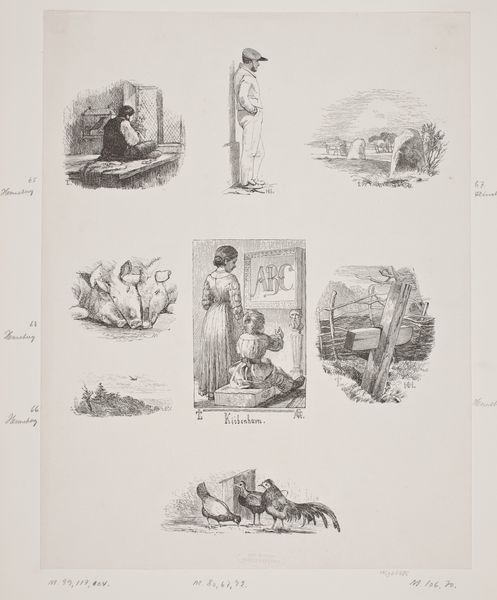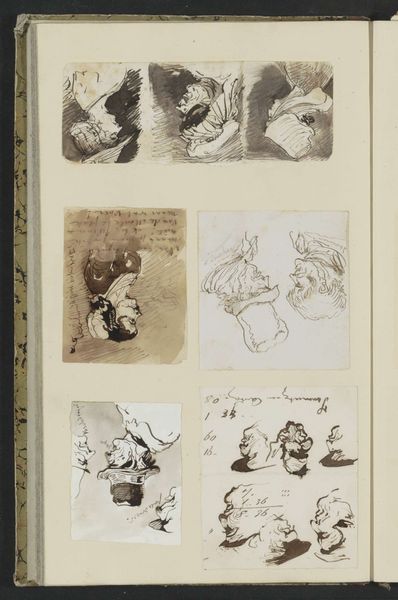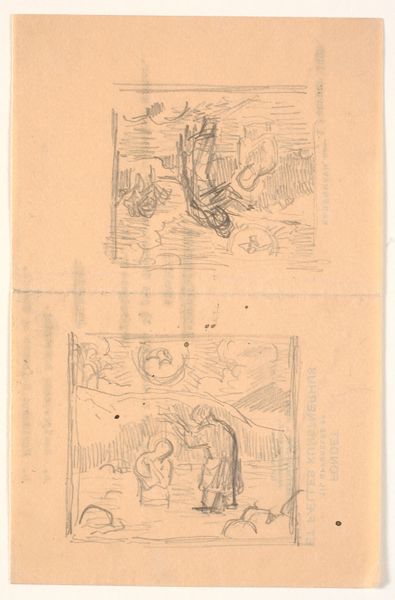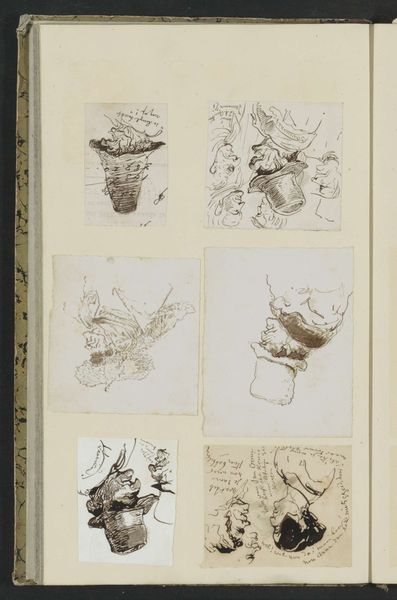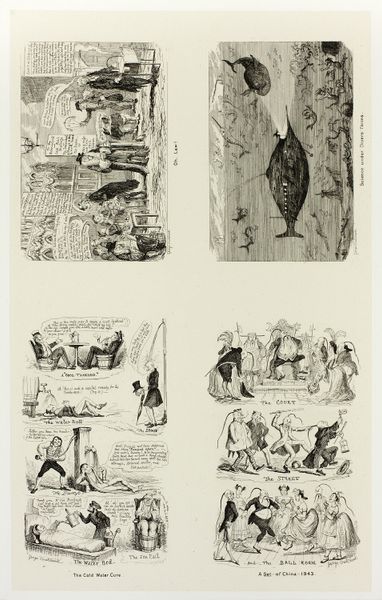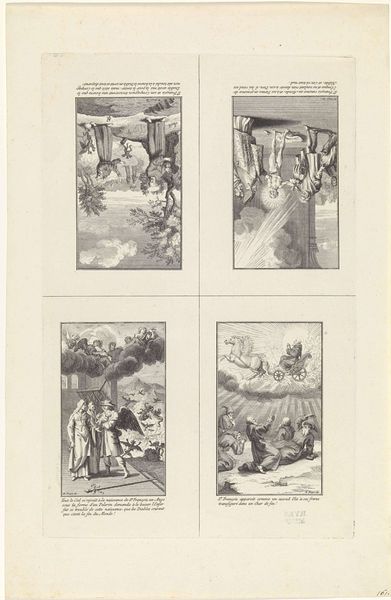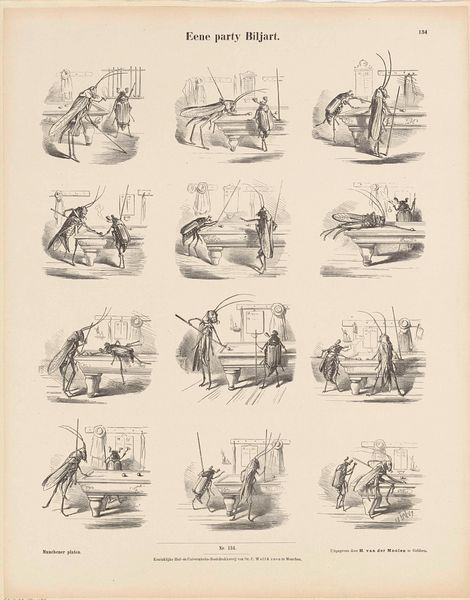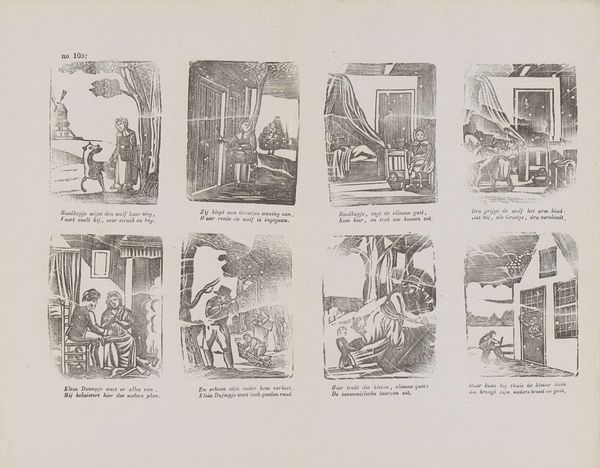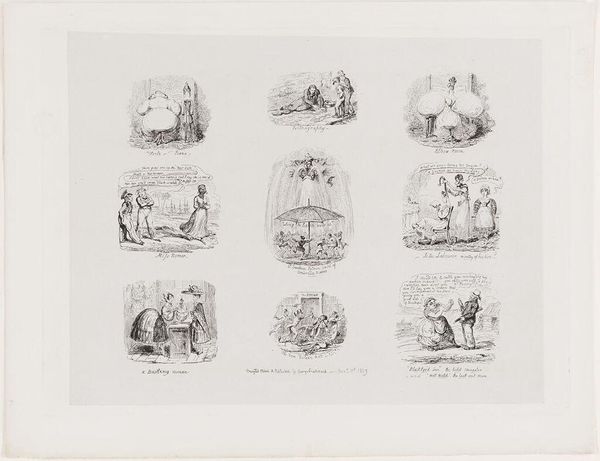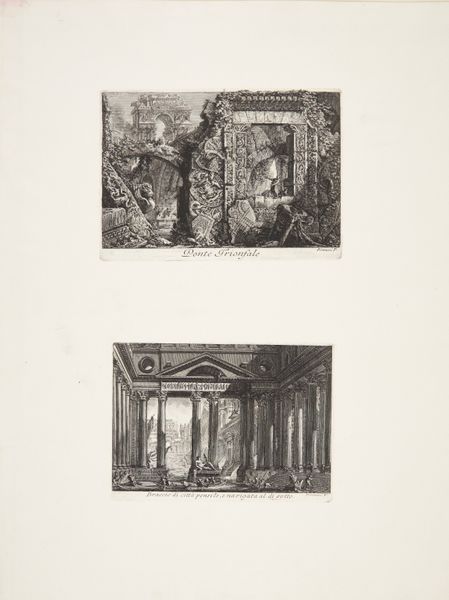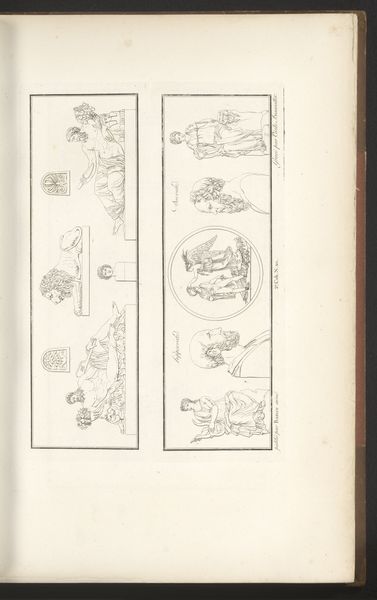
Seks træsnit efter J. Th. Lundbye. Medlemsblad fra Den Danske Radeerforening 1840s
0:00
0:00
drawing, graphic-art, print, woodcut
#
drawing
#
graphic-art
# print
#
figuration
#
form
#
romanticism
#
woodcut
#
decorative-art
Dimensions: 265 mm (height) x 343 mm (width) (bladmaal)
Editor: Here we have “Seks træsnit efter J. Th. Lundbye. Medlemsblad fra Den Danske Radeerforening”, a woodcut from the 1840s by Carl Peter Theodor Rothweiler. There are six different images on the one print, almost like a sample sheet. It feels a bit morbid, particularly with the skulls in one of the frames. What strikes you when you look at this piece? Curator: I see a fascinating document of artistic and institutional development. The Danske Radeerforening, or Danish Etching Society, played a key role in promoting printmaking as a fine art. The inclusion of Lundbye's designs is also noteworthy. Editor: Because Lundbye was famous at the time? Curator: Precisely. Lundbye was a celebrated Romantic painter. These woodcuts, though made by Rothweiler, showcase Lundbye's aesthetic beyond painting. The presence of this sheet in a membership publication suggests an effort to align printmaking with established artistic trends and prominent figures. The decorative arts in print became available to a larger audience, something that was previously afforded to the elite. Notice how these snippets of death were now reaching an expanding middle class. What do you think about the effect on its audience? Editor: So it’s almost democratizing death imagery? By putting it into more homes, is it becoming desensitized? Curator: Potentially. Or perhaps it reflects a broader cultural preoccupation with mortality in the Romantic era. Think of the Victorian mourning rituals which followed, where mourning was codified and ritualized through material objects. This sheet presents the symbolic, and invites consideration of public sentiment and how it manifests in art. Editor: That’s interesting, I never would have thought of the political implications of printmaking. Thanks, that gave me a lot to think about! Curator: My pleasure! It's fascinating to consider the socio-political life of what might appear to be a simple collection of decorative images.
Comments
No comments
Be the first to comment and join the conversation on the ultimate creative platform.
